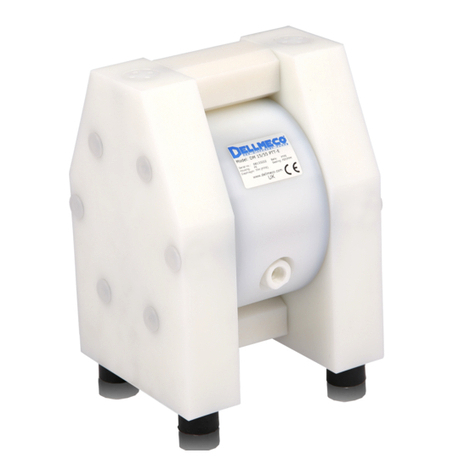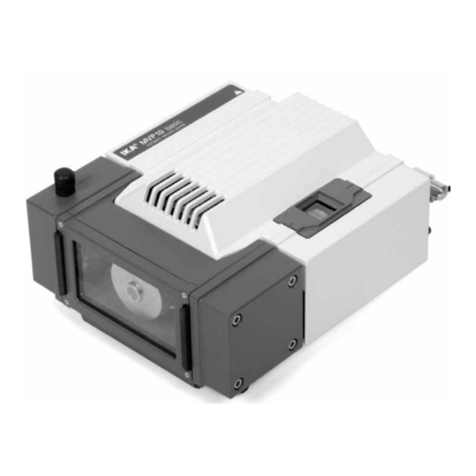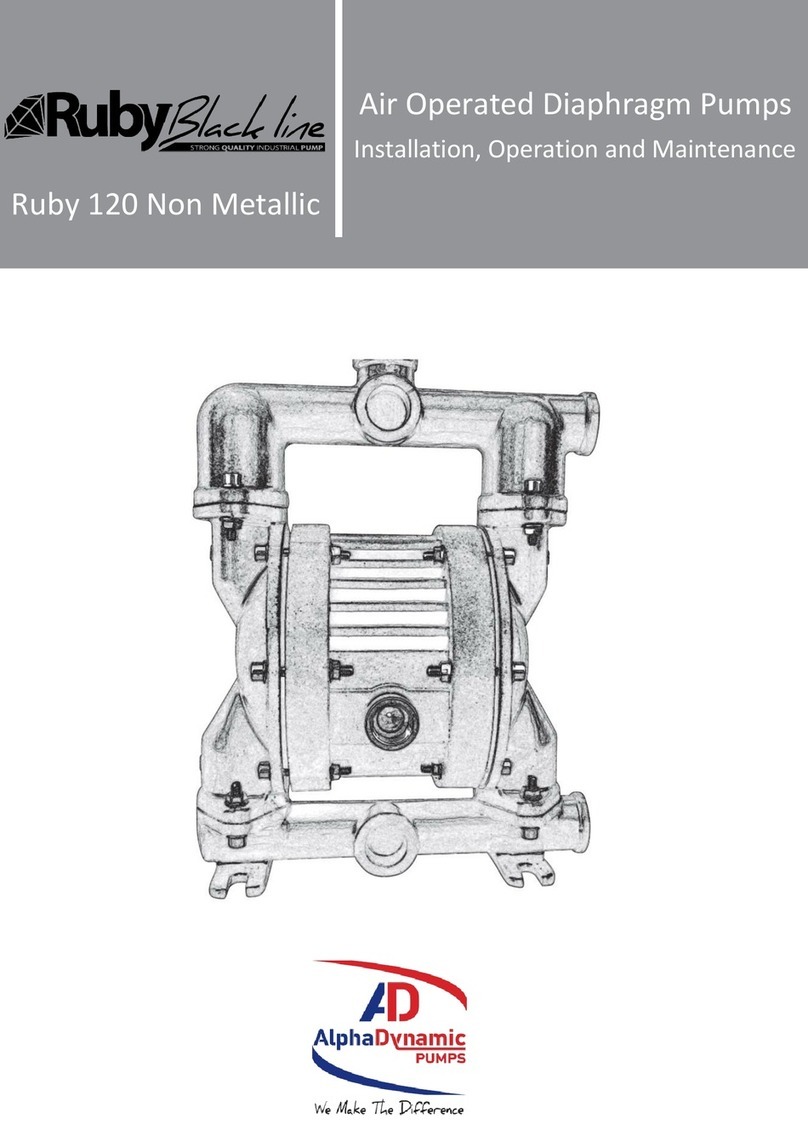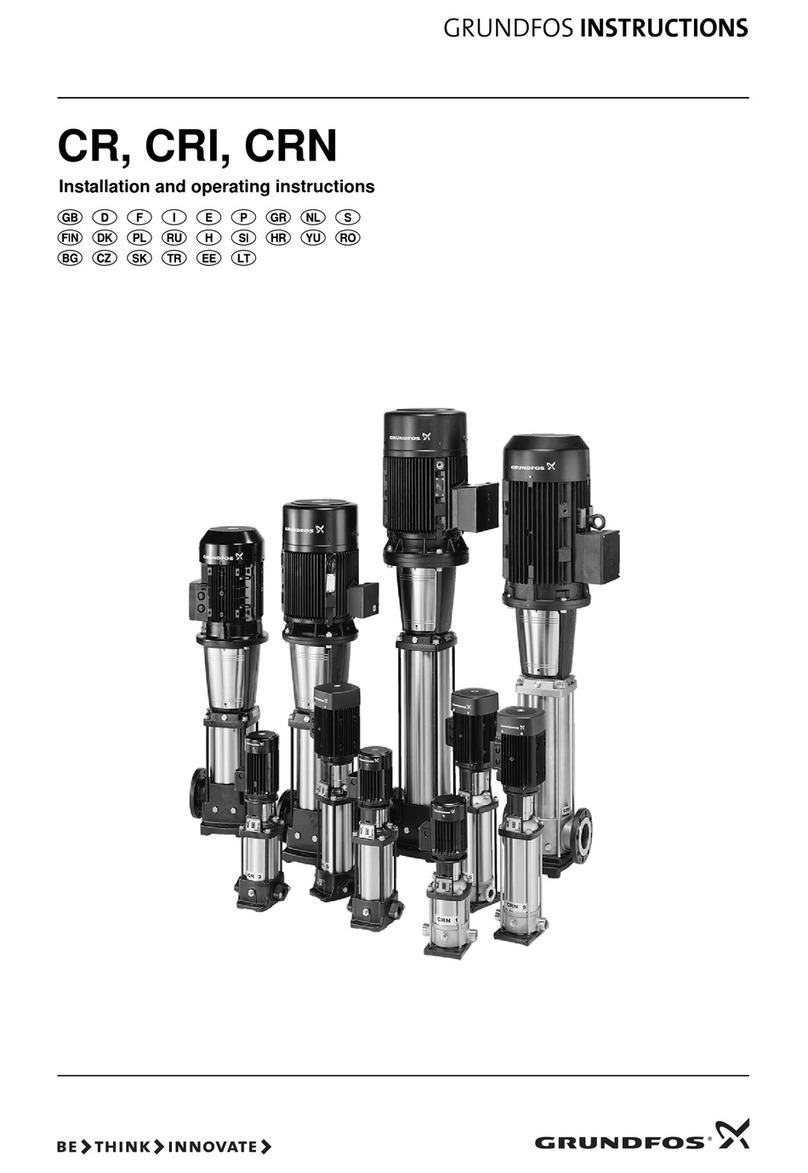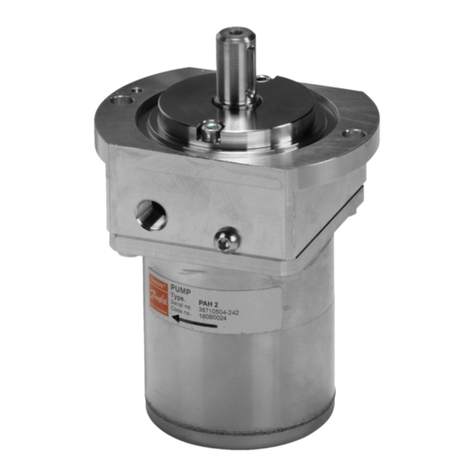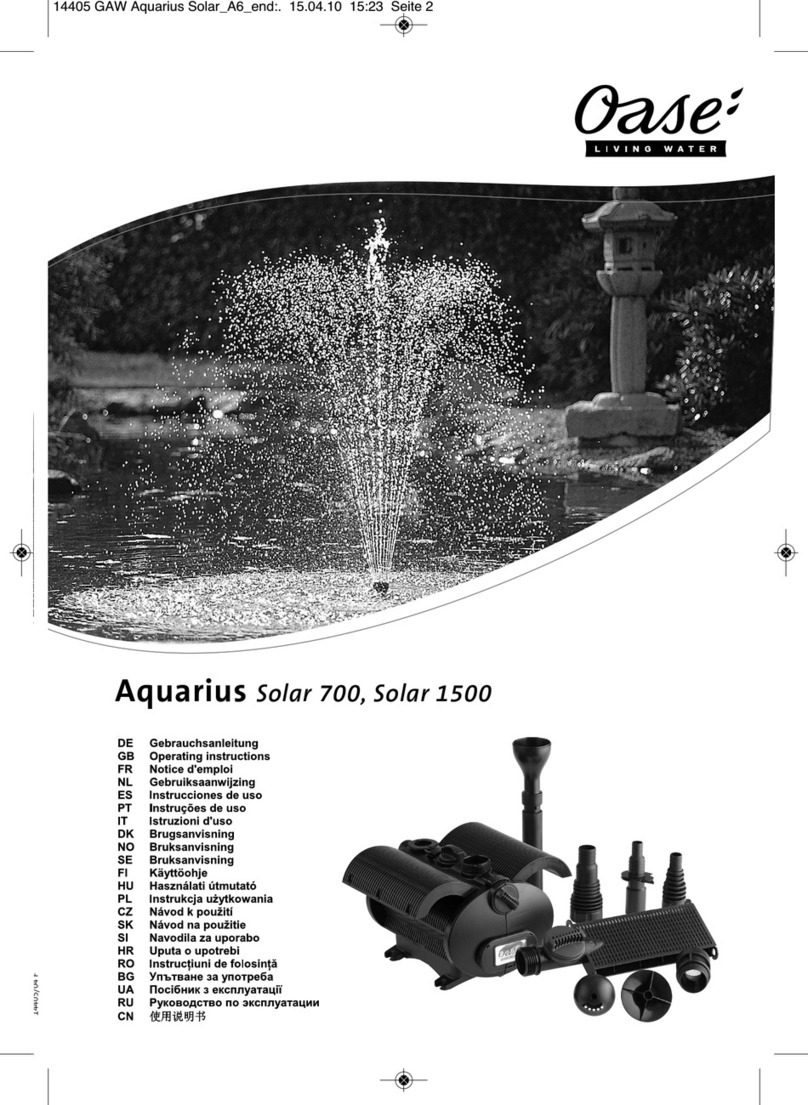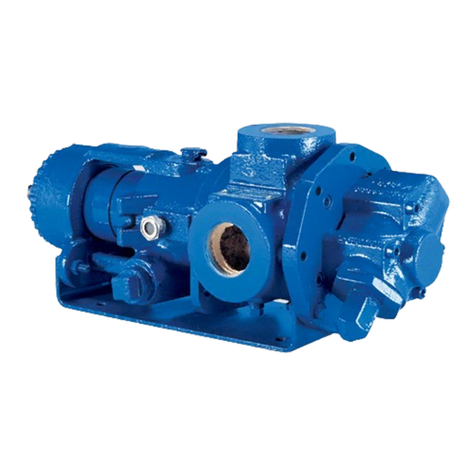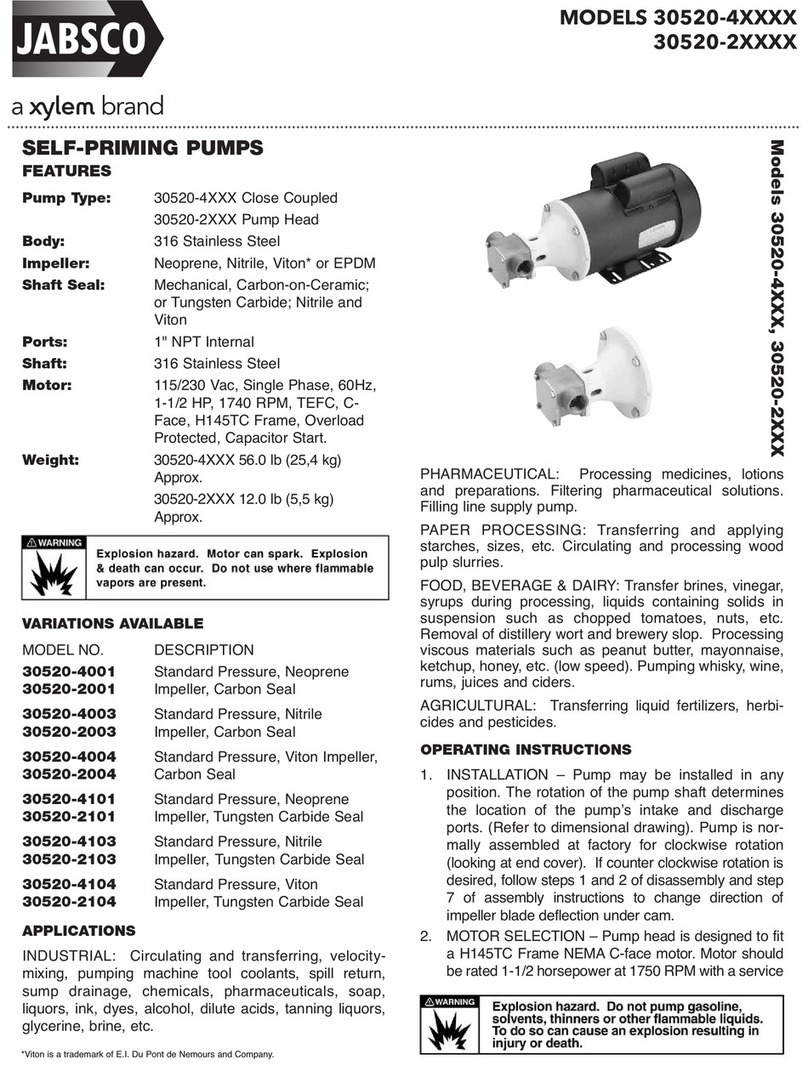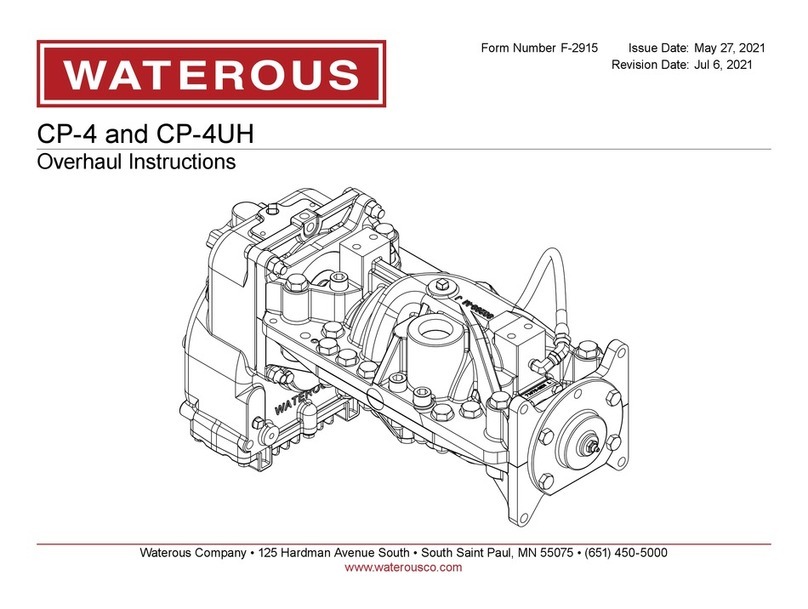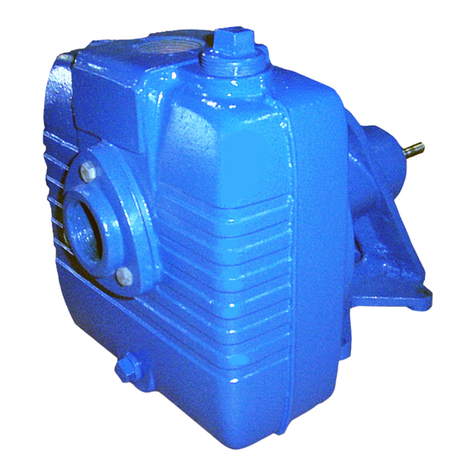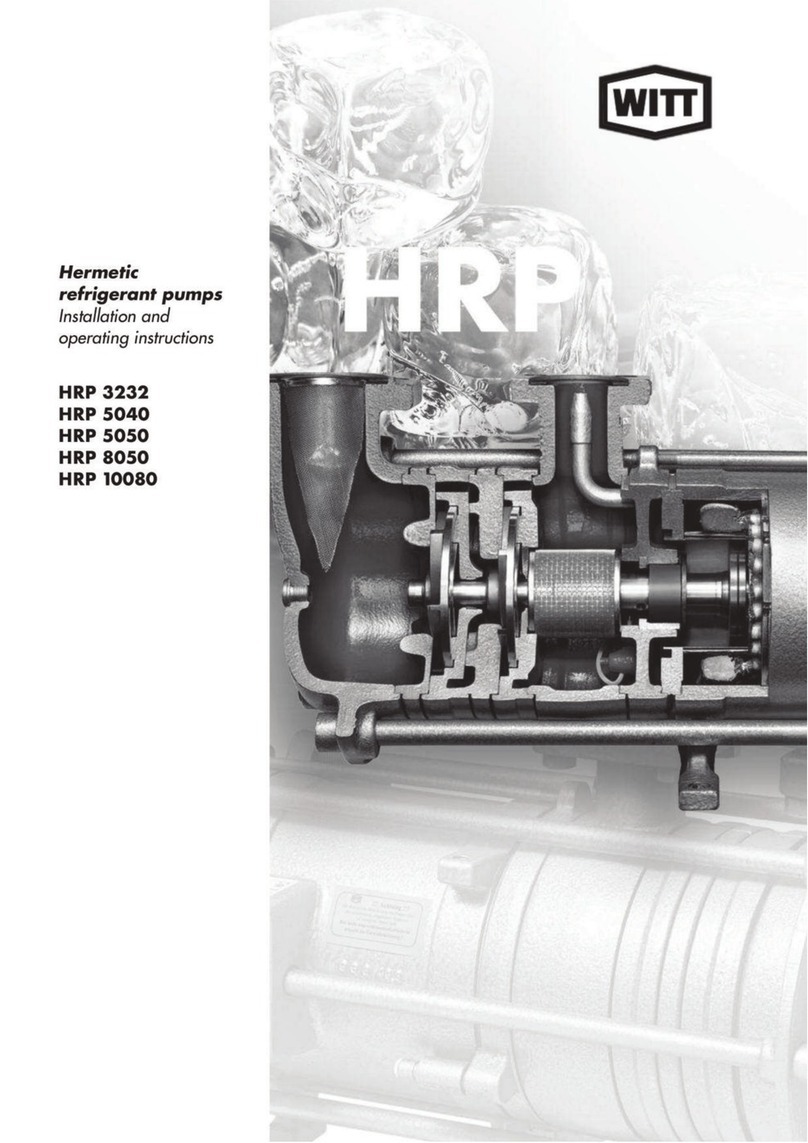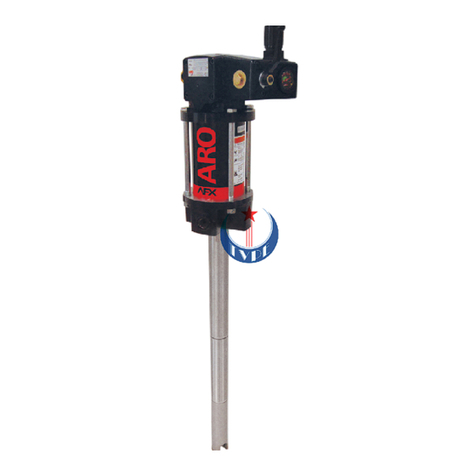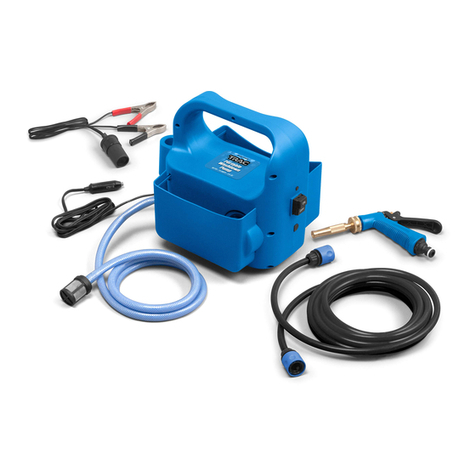
STEP THREE: Connect pump to battery or 12V supply
!
Batteries are hazardous because they contain caustic acid and can emit explosive gases. Caution must be exercised when
making connections to a battery to avoid shock and contact with acid and to prevent any sparking that could lead to an
explosion.
ALWAYS follow the safety instructions and steps listed below in exact sequence when connecting the pump to the battery
terminals.
The pump should be on a dedicated (individual) circuit, controlled with an ON/OFF switch rated at or above the fuse amp
rating indicated by the pump motor label. For the pump to meet European CE requirements the circuit must be protected
with a slow blow fuse or equivalent circuit breaker. Use 14 AWG wire or larger.
Connect the pump to battery using the following procedure:
1. Disconnect the boat’s battery ground wire.
2. Connect the pump's red wire to the positive (+) terminal of the
battery.
3. Connect the pump's black wire to the negative (-) terminal of the
battery.
4. Reconnect the boat’s battery ground wire
Note: Skip steps (1) and (4) if battery is not in a boat or vehicle.
WARNING: Always connect in this sequence to avoid possible shock.
STEP FOUR: Check and test completed assembly
!
Check assembly to assure the pump is properly assembled and in safe working condition.
Test the system for leaks.
1. If a holding tank is used, fill the tank with water.
2. If the pump is an “on demand” pump, when turned on, the pump will prime itself then turn off once reaching
pressure. When the flow continues, the pump will automatically re-start.
3. Check for leaks throughout the system. If a leak is detected, fix the leak and re-test the system.
Operation/Using the Pump
Pressure switch operation
The pressure switch (on the end of the pump) reacts to outlet pressure and interrupts power at the shut-off pressure
indicated on the pump label. When outlet pressure drops below a predetermined limit, the switch will turn the pump ON and
run until the shut-off pressure is achieved. The shut-off pressure is set to factory calibrated standards.
Note: If the plumbing is restrictive or the flow rate is very slow, the Pump may re-pressurize the outlet faster than the fluid is
being released, causing rapid cycling (ON/OFF within 2 seconds). If the pump is subjected to rapid cycling during normal
operation, or for infrequent period, damage may occur. Applications which exhibit rapid cycling should have restrictions in the
outlet eliminated or minimized.
Discontinue use if clogged or inoperative.
If the pump must be left unattended at any time:
1. Disconnect power to the pump
2. Relieve system pressure








